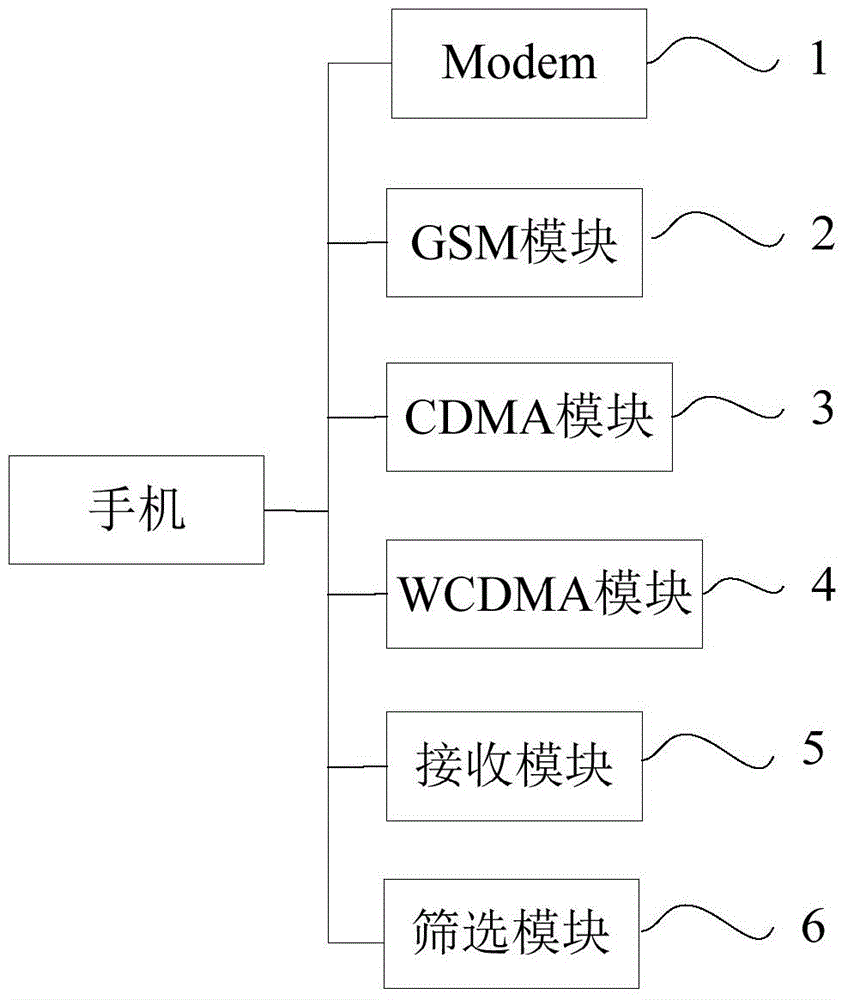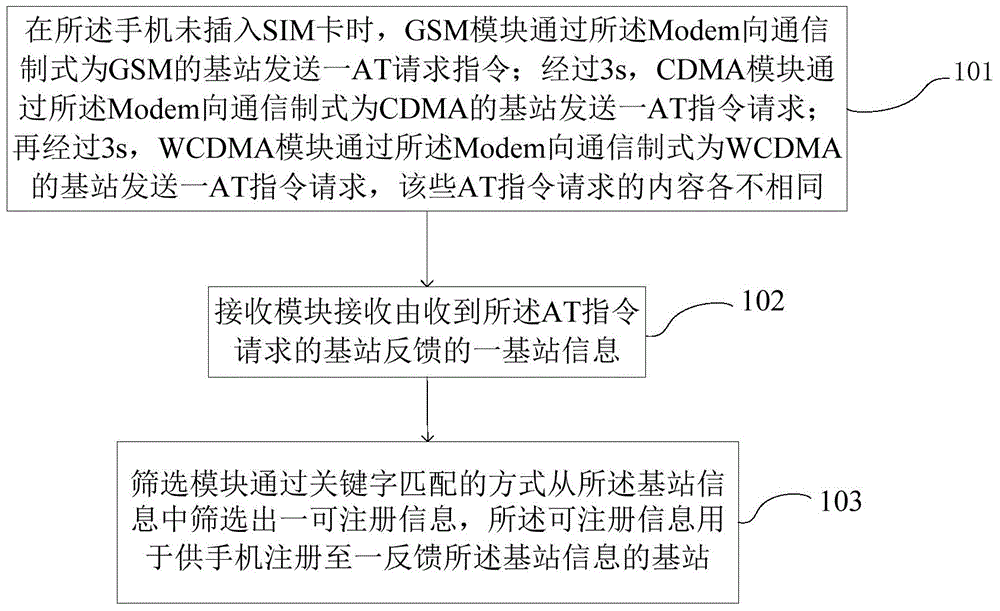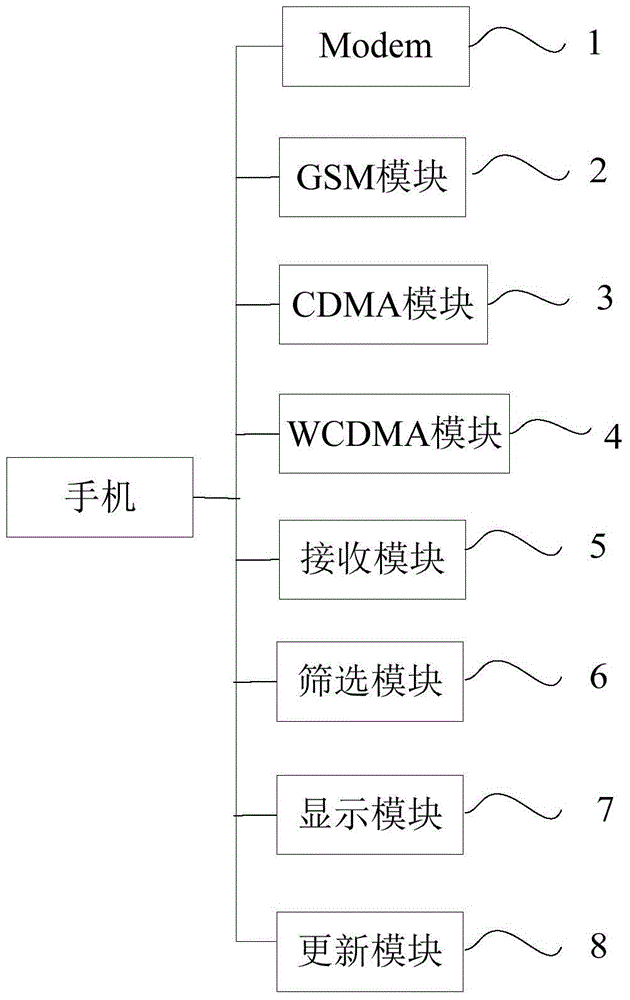Method for obtaining information of base station through cellphone, and cellphone
A technology of base station information and mobile phone, which is applied in the field of mobile phone acquiring base station information without SIM card, can solve the problems of unable to obtain base station with strong signal, card slot damage, etc., so as to improve equipment processing efficiency and avoid card slot damage , the effect of improving call quality
- Summary
- Abstract
- Description
- Claims
- Application Information
AI Technical Summary
Problems solved by technology
Method used
Image
Examples
Embodiment 1
[0045] This embodiment provides a mobile phone, such as figure 1 As shown, it includes a Modem1, a GSM module 2, a CDMA module 3, a WCDMA module 4, a receiving module 5 and a screening module 6.
[0046] When the mobile phone is not inserted with a SIM card, the GSM module 2 is used to send a generalized AT instruction request to the base station of GSM through the Modem; A generalized AT command request is sent for a CDMA base station; the WCDMA module 4 is used to send a generalized AT command request to a base station whose communication system is WCDMA through the Modem.
[0047] Among them, the content of each AT command is different. Assuming that the area where the mobile phone is located is at the foot of Mount Tai, the base stations near the area are: when the communication system is GSM, the first base station and the second base station assigned by the mobile phone operator China Mobile, the mobile phone operator The third base station allocated by China Unicom; th...
Embodiment 2
[0061] This embodiment provides a mobile phone, such as image 3 As shown, the difference between the mobile phone of this embodiment and Embodiment 1 is that the mobile phone of this embodiment also includes a display module 7 and an update module 8, and the display module 7 is used to display the registrable information on the screen of the mobile phone. The GSM module 2, the CDMA module 3 or the WCDMA module 4 are also used to periodically send the AT command request to the base station of each communication system, such as every 20s; the update module 8 is used for the base station information currently received by the receiving module The display of registrable information is updated when it is different from the base station information received last time.
[0062] Correspondingly, this embodiment also provides a method for a mobile phone to obtain base station information, which is implemented by using the mobile phone in Embodiment 2, such as Figure 4 As shown, the d...
PUM
 Login to View More
Login to View More Abstract
Description
Claims
Application Information
 Login to View More
Login to View More - R&D
- Intellectual Property
- Life Sciences
- Materials
- Tech Scout
- Unparalleled Data Quality
- Higher Quality Content
- 60% Fewer Hallucinations
Browse by: Latest US Patents, China's latest patents, Technical Efficacy Thesaurus, Application Domain, Technology Topic, Popular Technical Reports.
© 2025 PatSnap. All rights reserved.Legal|Privacy policy|Modern Slavery Act Transparency Statement|Sitemap|About US| Contact US: help@patsnap.com



